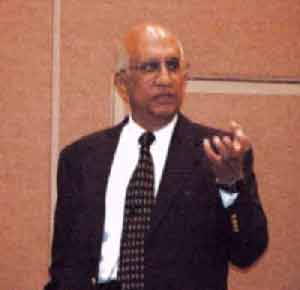Outline
- What companies must do to develop and maintain leadership in the new century
- 3 three important issues:
- Technology innovation
- Global competitors
- Global markets
- Winning strategies for global markets
Proprietary advantages lost
- Many automation products are commodities
- Available from several sources with marginally different features and benefits
- Software easily copied – functional equivalents
- Quality manufacture of commodity hardware
- Low margins – stiff competition, drastic price reductions
- Recession makes the competition more brutal
Technology Shift Needed
- Old technology - commodities
- PLC, DCS, SCADA, Drives
- Software – HMI, MES
- Sensors, valves, equipment
- New technology – inflection points
- Nanotech, MEMS
- Sensors – tiny, low-cost, pervasive
- Wireless everywhere
- Pervasive Internet – M2M
- Complex adaptive systems – Mesh networks
The Automation Mindset
- Result of short-term planning
- Incremental budgeted growth
- Same customers, same channels
- Many variations – needing integration
- R&D budgets
- Typical 1-3% (8-15% in Tech-biz)
- Mostly extensions, no “NEW” products
- More developments being outsourced
Strategic Misdirection
- Shift to solutions/integration
- Low margins
- Services intensive
- Compete with SI customers
- Going offshore to reduce costs
- Losing technology advantage
- Losing people and process knowledge
- Consolidation – incestuous M&A
- Pig + pig = more pigs
- Compare with Tech-leaders
Productivity is the key
- Productivity is now a global race between regions and nations.
- Those who can make things cheaper, faster, better – win!
- US and Europe losing technology advantage
- Factories & process plants moving
- Closer to customers
- Closer to raw materials
Knowledge work - anywhere
- Internet makes physical location irrelevant
- Availability of trained people
- Know-how is spreading
- Knowledge is power
- The “first world” is losing the advantage
- Outsourcing moving up the food-chain
- New competition brewing
Offshore Outsourcing
- It’s NOT just “cheap labor”
- Better, cheaper, faster
- Local investment in automation & equipment
- Availability of trained labor
- Steady shift of know-how
- Marketing – product specifications
- Development – already shifting
- Global sales will be “outsourced”
China – Manufacturing
- Manufacturing prowess
- Good, repetitive quality
- Motivated, hungry
- Big investment in automation
- Worldwide market-share
- World leadership in several products
- Wal-Mart – $ 18 billion from China
China Hitech growth
- 700,000 engineers a year
- 37% of all college graduates
- University system growing
- Comparable engineers
- Pay ranges - $4,000 to $8,000/yr.
- New high-tech competitors
- Networking, Semicon, Biotech, Space
India in a new century
- World's most populous country (mid-century)
- Advantage - English-speaking
- Already the world's largest democracy
- US Software – $6-8 billion, 60% growth
- Infosys - Revenue $1.5B, profit 30%, growth 50%, Nasdaq market-cap $18.6 billion
- Wipro - Revenue $ 1.9B, profit 19%, growth 50%, NYSE market-cap $14B
- Strong growth intentions
Global HiTech
- Other regions/countries are competing strongly
- Central & Eastern Europe
- Russia, Brazil, Mexico
- Traditional leaders steadily losing advantage in many key technologies
- Read Tom Friedman’s book “The world is flat”
World competition brews
- Third-world
- Innovative
- Competitive
- Capitalist “bait” – big tax-holidays
- Fundamental drive
- Hungry for upward mobility
- You cannot simulate hunger
Outsourcing Solutions
- Use global resources
- Focus on Technology
- Utilize knowledge partners globally
- Develop Solutions for Customers
- Outsource “picks, shovels, rakes & hoes” - build the railroad
World structural changes
- The Achilles heel of Capitalism
- Selling/losing knowledge advantage with short-term profit motive
- Old globalization was “cheap labor”
- New globalization is “knowledge”
- Globalization and free trade
- Massive disruptions in where and how world’s goods are produced
Keys for success
- Proprietary products
- Customer productivity important
- Continuous upgrade to maintain leadership.
- Outsourcing is irrelevant – productivity is the key.
- High-value-added
- Proprietary knowledge
- Tailored to specific customer needs.
- Go global – think local
- Special (custom) needs handled locally
- Partnership and proximity
Futures prognostications
- The “good old days” will not return
- The “good new days” are here
- Look for inflection points
- Future is exciting
- Not just a reflection of the Past
- New leaders will emerge
Conclusion
- Use the technology advantage
- Look for new products & markets
- Lookout for new competitors
- Go global, think local
- Global resources & partners
- Lose the HQ mentality
- Be first, run fast

|


 Return to JimPinto.com HomePage
Return to JimPinto.com HomePage

